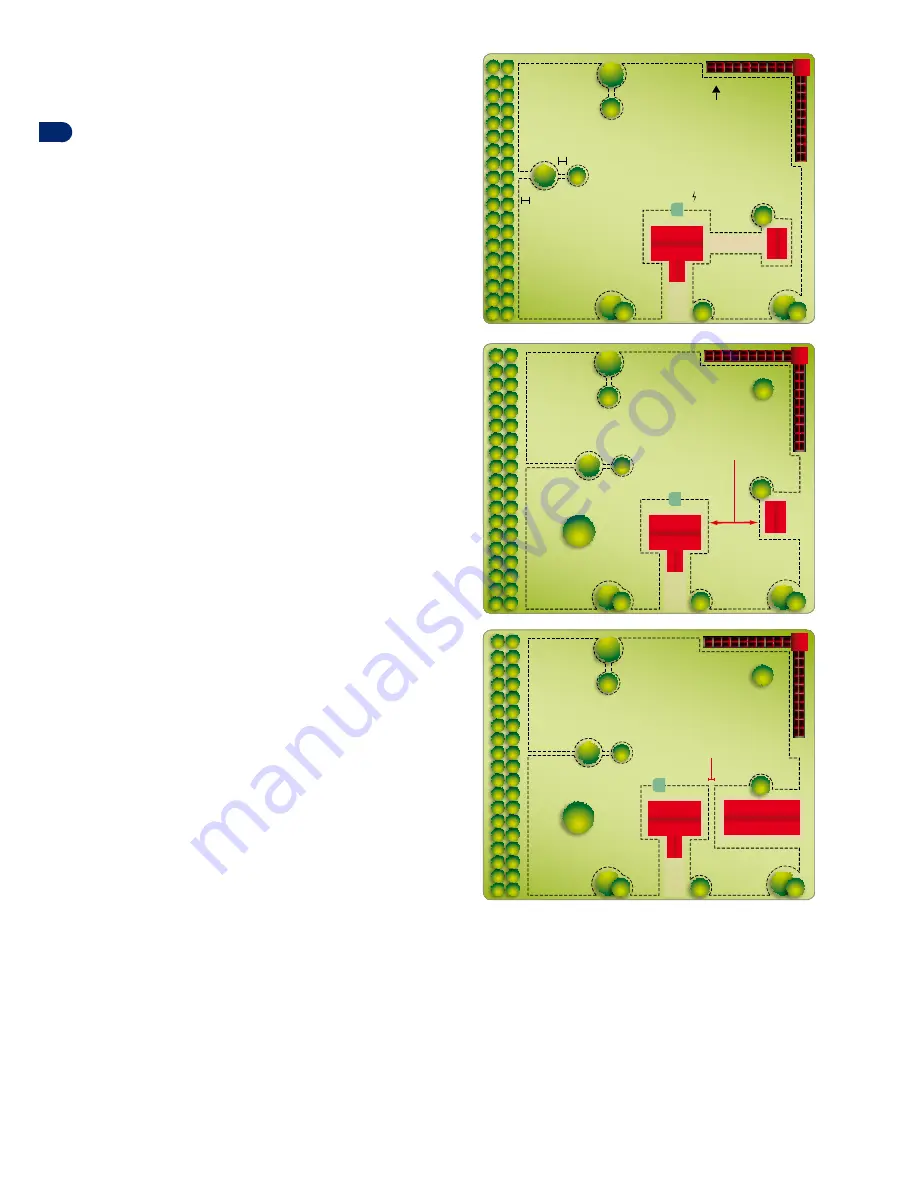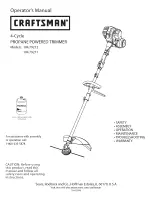
14
User’s manual
EN
marking the boundary of the work area
3. Check the entire lawn surface and assess whether it is
necessary to divide it into separate work areas as per the
rules described here below. Before installing the perimeter
wire, check the entire path to make this procedure easier. The
illustration shows a lawn with the track for installation of the
perimeter wire.
During installation, identify any secondary areas and closed
areas. A secondary area is part of a lawn connected to the
primary lawn with a passage that is difficult to reach by the
robot's normal movement. The area must be reachable without
any rises or drops greater than those allowed. Whether a zone
is to be defined a “secondary area” also depends on the size
of the primary area. The larger the primary area, the harder it
will be to reach narrow passages. More generally, a passage
narrower than 200 cm (78.74 ") is considered a secondary area.
The number of secondary areas managed depends on the
characteristics of the model (See “Technical Specifications”).
The minimum passage allowed is 70 cm (27.56 ") from each
edge of the perimeter wire. The perimeter wire must be
positioned at a distance of (to be indicated below) from any
objects outside the lawn; therefore, the necessary space for
passing must be 140 cm (55.12 ") if there is a wall or hedge
on both sides.
If this passage is very long, the width should be more than 70
cm (27.56 ") between perimeter wires.
During programming, it is necessary to configure the size of the
secondary areas as a percentage of the lawn, and the quickest
direction for reaching it (clockwise or counter-clockwise), as
well as the number of meters of wire needed to reach the
secondary area. See “Programming Mode.”
24 v
Track for laying the perimeter wire
min. 70 cm / 27,56 "
min. 70 cm / 27,56 "
min. 70 cm / 27,56 "
corridor with a minimum passage
of 70 cm / 27,56 " from edge to edge.
PRIMARY AREA
SECONDARY AREA
If the aforesaid minimum requirements are not met i.e. an area
separated by a rise or drop with characteristics that cannot be
managed by the robot or a passage (corridor) narrower than
70 cm (27.56 ") from perimeter edge to perimeter edge, then
this area of the lawn is considered a “Closed Area.” To mark a
“Closed Area” lay the outgoing and incoming perimeter wire in
the same track at a maximum distance of 1 cm (0.40 "). In this
case, the robot is unable to reach the area autonomously, and
must be managed as described in the chapter “Management
of Closed Areas.” The management of “Closed Areas” reduces
the square meters that can be managed autonomously by the
robot.
corridor with a passage
< 70 cm / 27,56 "
PRIMARY AREA
CLOSED AREA
Содержание 1L2DL
Страница 40: ...40 User s manual EN...















































